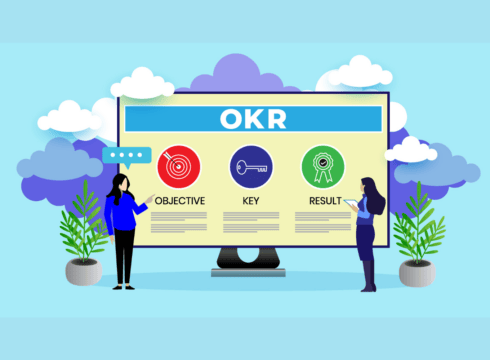The first step towards implementing OKRs should start with enlightening the organisation about its usage and function
Transparency is a crucial aspect of the OKR framework which enables collaboration and fosters accountability in the organisation
OKRs can be used to provide a holistic performance review of the employees and the teams
Inc42 Daily Brief
Stay Ahead With Daily News & Analysis on India’s Tech & Startup Economy
Objectives and Key Results (OKRs) have been embraced by many companies to establish high-level measurable goals based on ambitious trackable targets. Pioneered by Intel’s former CEO Andy Grove, OKRs have since evolved and become popular across various industries, enabling companies to streamline their work, increase transparency and adopt more effective goal-setting practices.
Reputed organisations like Google, LinkedIn and Netflix have credited Objectives and Key Results (OKRs) to boosting their growth. These companies have used OKRs to launch innovative products and to improve their customer satisfaction, which has helped them in achieving their business milestones.
To learn more about it, let’s dive into the content and explore how OKRs can be used as an effective tool for empowering businesses.
Promote Understanding Of OKRs
The first step towards implementing OKRs should start with enlightening the organisation about its usage and function. Training sessions and workshops should be organised with the motive to educate everyone about the basics of OKRs.
Additionally, the difference between objectives (what the organisation wants to achieve), and the key results (the parameters set for measuring progress that aligns with the objective) should also be specified by providing real-life examples.
Align OKRs With The Company’s Vision And Mission
Aligning objectives and key results with the company’s mission and vision should be kept in consideration. This will ensure that all the efforts are directed towards a common goal. To achieve this, start by defining high-level objectives that have a direct association with the company’s strategic goals. To make it more achievable and easier to monitor, break these down into smaller, department-oriented OKRs.
Set Ambitious Yet Achievable Objectives
Setting ambitious goals that are realistic and attainable is necessary for every organisation and is one of the foremost principles of OKRs. Many organisations that set highly ambitious and unrealistic goals don’t provide a clear picture of the organisation’s progress.
Therefore, it is advised to use the 70% rule, where objectives are set with the expectation that if 70% of the results are achieved, then it means that the objective has been achieved. This encourages the team members to be creative in their approach and aim high without the fear of failure.
Create Measurable Key Results
To ensure that the objectives are effective, their progress must be measured. Specific key results that can be measured and are time-bound can significantly provide more clarity in defining what success looks like.
For example, instead of setting the key result to “improve customer service” make it more specific as “increase the Net Promoters Score (NPS) from 60 to 75 by the end of Q3,” which can help define success.
Encourage Transparency & Communication
Transparency is a crucial aspect of the OKR framework which enables collaboration and fosters accountability in the organisation. Implementing technology such as advanced OKR software and dashboards can help to monitor progress in real time. Scheduling regular check-ins and review meetings will also benefit in discussing progress, undertaking the challenges and adjusting OKRs as necessary.
Integrate OKRs Into Performance Management-
OKRs can be used to provide a holistic performance review of the employees and the teams. Thus, integrating OKRs into the overall performance management system of the organisation can aid in providing a holistic view of the employee’s performance, his focus on long-term goals and his efforts in achieving them.
OKR is a powerful tool for setting clear and aspirational objectives that empower businesses to unlock their full potential. Implementing OKRs in an organisation can drive exceptional performance and growth. Therefore, one needs to make great use of this tool to provide clarity, focus and direction to the organisation.
{{#name}}{{name}}{{/name}}{{^name}}-{{/name}}
{{#description}}{{description}}...{{/description}}{{^description}}-{{/description}}
Note: We at Inc42 take our ethics very seriously. More information about it can be found here.


